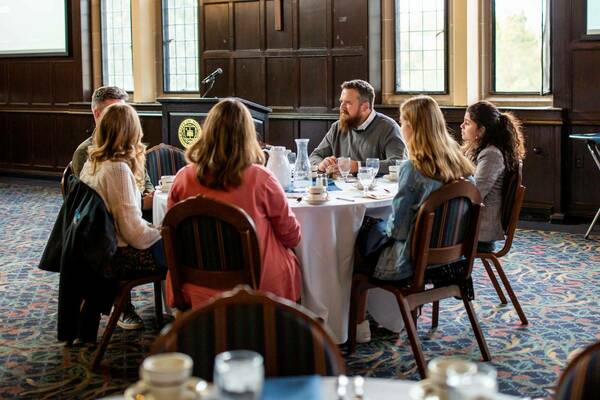
Ask college students how they’re feeling, and you’re likely to hear a lot of the same responses. Tired. Stressed. Busy. It seems like everyone’s burnt out.
But are young people today burning out at higher rates than previous generations?
Actually, yes, said psychologist Sara Konrath in a presentation to students in the Sheedy Family Program of Economy, Enterprise, and Society on November 10, 2022.
An assistant professor of philanthropic studies at Indiana University’s School of Philanthropy, Konrath has spent much of her career studying trends among young people across generations, including rates of empathy, narcissism, and, most recently, burnout. Her research has demonstrated that young people are, indeed, burning out at higher rates than previous generations.
But, as she was quick to add in her Sheedy Dinner presentation, it’s not for the reasons many people assume. Young people today are not more fragile than their ancestors, nor is their burnout easily explained as an effect of social media.
Instead, the expectations for them, including their own self-expectations, are measurably higher than for previous generations. On average, young people today score higher on IQ tests, get more instructional hours in school and have more impressive resumes coming out of college than previous generations.
This additional information, Konrath argued, helps contextualize the burnout epidemic. Collectively, students today are working harder – and achieving more – than their parents and grandparents.
After Konrath’s presentation, students dialogued in small groups about burnout as it shows up in their own lives. One key insight that emerged, as students compared experiences, was the systemic nature of the problem.
Burnout may seem like an individual issue, which people must address for themselves through therapy. But what if burnout is a product of structures or values built into our society or economy? What would solutions look like then?
Konrath encouraged the students – whose studies all fall at the intersection of business and the liberal arts – to think about how we could use data to seek viable answers to precisely such big questions.